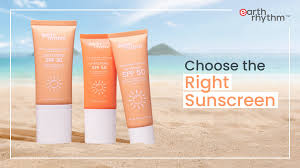
Physical Sunscreens vs Chemical Sunscreens
Sunscreen is an essential product for protecting your skin from sun damage that can lead to premature aging and skin cancer. But with so many options on the market, it can be confusing to know which type of sunscreen is right for you. The two main categories of sunscreen are physical and chemical. Understanding how they work and their unique benefits and drawbacks can help you make the right choice. The best way to find the perfect sunscreen is with your Baumann Skin Type, which you can find by taking the quiz for free today!
Why you need to use sunscreen
Sunscreen is your skin’s first line of defense against harmful solar radiation. Exposure to UV radiation from the sun causes damage to the skin over time in the form of sunburns, wrinkles, dark spots, or even skin cancer. Both UVA and UVB rays have risks. UVA rays penetrate deep into the skin, causing genetic damage that can lead to skin aging. UVB rays burn the surface of the skin, causing redness and irritation. For complete sun protection, you need broad spectrum coverage against both UVA and UVB.
Sunscreen is like a shield to deflect or absorb UV rays before they damage your skin. Physical and chemical sunscreens perform this function in different ways. This article will explain the key differences, so you can make an informed decision about the best sunscreen for your needs. We’ll also cover what “broad spectrum” means and how to pick an optimal sunscreen based on your skin type.
What are physical sunscreens?
Physical sunscreens, also known as mineral sunscreens, contain active ingredients like zinc oxide, titanium dioxide, and a few other common metals that sit on top of your skin to physically block UV radiation. They reflect and scatter the light away from your body.
Because the active ingredients in physical sunscreens don’t absorb easily into the skin, they offer immediate protection that lasts as long as the product remains on your skin. The downside is that they need to be washed off. They are less likely to irritate sensitive skin.
Here are some of my favorite physical sunscreens:
How do Physical Sunscreens Work?
The minerals zinc oxide and titanium dioxide in physical sunscreens work like tiny mirrors, deflecting UV light away from the skin. These thick and opaque minerals are too large to penetrate deeply into the skin, so they sit on the surface and act as a shield.
Physical sunscreen active ingredients remain stable when exposed to UV rays for longer than chemical sunscreen ingredients.
Benefits of physical sunscreen
Some of the benefits of physical sunscreens include:
Immediate UV protection that starts working as soon as applied
Stable in sunlight compared to chemical sunscreens
Less likely to irritate sensitive skin
Better for sensitive areas like around the eyes
Preferred for children’s delicate skin
Safe for pregnant women
Won’t break down over time and stop working quickly.
Lower risk of allergy
Safe for reefs
Safe for marine life
Organic forms are available
Shortcomings of Physical Sunscreens
While physical sunscreens have many advantages, they also come with a few drawbacks:
Can leave a colored film on the skin, especially in higher SPFs
More difficult to rub in completely
May be visible in hair and facial hair
May pile up when layered with other skin care products
Often not broad spectrum
What are Chemical Sunscreens?
Instead of sitting on top of the skin, chemical sunscreens are absorbed and work from within to protect your skin. Common active ingredients in chemical sunscreens include:
Avobenzone
Oxybenzone
Octisalate
Homosalate
Octocrylene
When applied, chemical UV fighting compounds penetrate the skin and absorb UV rays before they reach sensitive skin cells below the surface. The chemicals convert UV radiation into a small amount of heat that is released from the skin, allowing only a fraction of the rays to penetrate. In reality, most chemical sunscreens also contain mineral sunscreen ingredients for broader protection. Here are some of my favorite chemical sunscreens, some of which include mineral ingredients:
How do chemical sunscreens work?
When chemical sunscreen ingredients absorb UV light, the energy causes chemical bonds within the molecules to rearrange. These chemical reactions cause the sunscreens to quickly convert UV rays into safer radiation in the form of infrared light, or heat.
The energized chemicals release the excess energy as heat. This cycle repeats millions of times per second to continually protect the skin from damaging UV exposure.
Since the chemical components of sunscreen are activated and oxidized, chemical sunscreens need to be re-applied every couple of hours. Chemical sunscreens, like physical sunscreens, should be washed off at the end of the day.
Benefits of chemical sunscreens
Benefits of Chemical Sunscreens
There ae many types of chemical sunscreens and the benefits and risks depend upon the chemical sunscreen that is used.
Some advantages of chemical sunscreens include:
They absorb quickly into the skin without leaving color behind
More lightweight and less greasy
Easier to rub in completely
Less visible on the skin
May be water resistant
Often affordable and widely available
May have better UVA coverage
May be broad spectrum
Shortcomings of Chemical Sunscreens
Some potential downsides of chemical sunscreens to consider:
They can irritate sensitive skin more often
Absorption into bloodstream is possible in some ingredients
May cause allergic reactions in those with sensitivities
Some chemical compounds are not stable in long-term sunlight
Require time after application to bind to skin before fully effective
Can degrade in heat and sunlight over time
Some chemicals may interact with hormones
Often oily or greasy
May hurt reefs or marine life
Physical Sunscreens vs Chemical Sunscreens
Let’s recap the differences we discussed regarding physical sunscreens vs chemical sunscreens:
Physical sunscreens reflect UV rays, while chemical sunscreens absorb UV rays before they can damage skin cells.
Physical acts as a shield sitting on the surface while chemical sunscreens penetrate into the skin to convert light energy into heat.
Physical sunscreens offer immediate protection while chemical sunscreens require 20-30 minutes after application to fully take effect.
Physical sunscreens may provide broad spectrum coverage with a limited set of active ingredients while chemical sunscreens need a mix of several chemicals to protect against the full UV spectrum.
Physical sunscreens often leave a tint on the skin while chemical sunscreens sink more thoroughly into the skin.
Physical sunscreens rarely cause irritation or allergies while chemical sunscreens have a higher risk of allergic reaction and interactions.
What Does Broad Spectrum Mean?
Broad spectrum on a sunscreen label means it provides protection against both UVA and UVB rays. Here’s a breakdown:
UVA rays have longer wavelengths that penetrate deep into the dermis layer of the skin. UVA exposure causes skin aging, wrinkles, and dark spots.
UVB rays have shorter wavelengths that burn the outer layer of the epidermis. UVB exposure causes sunburns and DNA damage that can lead to skin cancer.
Broad spectrum sunscreens contain active ingredients to filter both UVA and UVB light. For complete protection, it’s key to choose a formula with broad spectrum coverage.
Here are some of my favorite broad spectrum sunscreens:
Which sunscreen is right for you?
There are benefits to both physical and chemical sunscreens. Here are a few factors to consider when choosing:
Skin type: Those with sensitive skin may prefer physical sunscreens that contain fewer potential irritants. Chemical sunscreens work well for oily skin types since they aren’t as occlusive.
Activity: For outdoor sports and water activities, a water resistant chemical sunscreen may hold up better. Physical options are preferable for the eyes and other sensitive areas.
Aesthetic: If you don’t want to worry about residual color ruining your makeup, chemical sunscreens provide more invisible protection.
Ingredients: Avoid chemical sunscreens if you have skin allergies or prefer more natural products. Check chemical filters if you’re concerned about hormone disruption.
The best sunscreen is one you’ll use consistently. Look for a broad spectrum SPF 30 or higher formula suited for your skin type and needs. Reapply every 2 hours when outdoors. Protecting your skin should be a priority.
Here are some of our most popular sunscreens:
Closing thoughts
Both physical and chemical sunscreens have their strengths. The most important thing is choosing a broad spectrum formula with an SPF of at least 30 that you will wear daily. Get familiar with the active ingredients and find out if you have any sensitivities. Finding the right sunscreen for your skin will provide essential protection from UV damage for healthier, younger-looking skin over your lifetime.
Want to discover the perfect sunscreen for you? Take our Baumann Skin Type quiz today to receive skin care product recommendations tailored for your skin’s unique needs. Once you’ve done that, check out our complete collection of sunscreens here!


